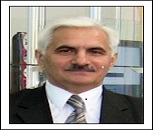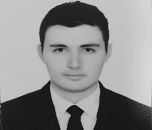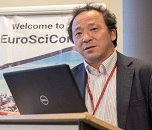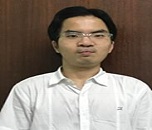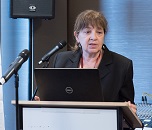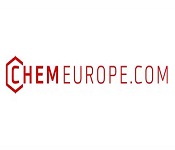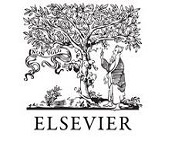materials science 2022
ABOUT CONFERENCE
SESSION TRACK
MARKET ANALYSIS
Materials Congress 2020 might be a field of innovation that envelops the range of materials assortments and the best approach to utilize them in delivering. Materials length the range: metals, pottery, polymers (plastics), semiconductors, and blends of materials known as composites. We tend to rest in a world that is every needy upon and confined by materials. All that we tend to see and utilize is made of materials: vehicles, planes, PCs, coolers, microwaves, TVs, dishes, flatware, athletic instrumentation of different types, and even prescription gadgets like substitution joints and appendages. Those need materials explicitly custom-made for their application. Explicit properties territory unit required that outcome from meticulously picking the materials and from overwhelming the delivering procedures wont to change over the basic materials into a definitive structured item. New materials innovations created through designing and science can in any case construct astounding changes in our lives inside the twenty first century, and people in Materials Science and Engineering can in any case be a key in these progressions and advances.
These specialists shake the science and innovation of assembling materials that have properties and shapes fitting for reasonable use. Exercises of those designers shift from essential materials creation, just as use, through the arranging and improvement of late materials to the solid and conservative delivering for a definitive item. Such exercises zone unit found more often than not in ventures like part, transportation, common way of thinking, vitality transformation, and therapeutic claim to fame frameworks. The long run can bring regularly expanding difficulties and open doors for fresh out of the plastic new materials and higher procedure. Materials territory unit advancing speedier nowadays than whenever ever. New partner degree improved materials region unit a "supporting innovation" - one which may invigorate development and product improvement. prime quality item result from improved procedure and a great deal of pressure will be put on recovering and use. For these few reasons, most studies name the materials field all in all of the vocations with brilliant future chances.
Major Material Science Associations around the Globe
- American Chemical Society (ACS)
- American Physical Society (APS)
- The Materials Information Society (ASM International)
- The Materials Research Society (MRS)
- Microscopy Society of America (MSA)
- The Minerals, Metals & Materials Society (TMS)
- Sigma Xi: The Scientific Research Society
- International Society for Optical Engineering (SPIE)
- The American Ceramic Society (ACerS)
Major Universities of Nanotechnology and Material Engineering in Europe:
- University Rovira
- Jaume University
- National University of Science and Technology
- Novosibirsk State University
- Peter the Great St. Petersburg Polytechnic University
- Jonkoping University
- Samara National Research University
- West University of Timisoara
- Advanced Materials Science & Engineering
- Master of Science Product Refinement
- Advanced Materials Science & Engineering
- Master in Engineering Materials Science
- Master in Macromolecular Materials
- Master in Product Development and Materials Engineering
Significance and Scope:
Materials Science and building is a syncretic request hybridizing metallurgy, Ceramic generation, strong state physical sciences, and Chemistry This making field incorporates analysts from a wide scope of controls, including physicists, Material Science specialists, Ceramic architects, logical specialists, engineers, information technologists and material Researchers, and scholars.Ceramics designing is being associated with generally all fields imaginable, including equipment, magnetics, information advancement, materials improvement and biomedicine. World Congress on Materials Science and Engineering'(MATERIALS CONGRESS 2020)will be a run of the mill organize for Researchers, Scientist, pioneers, perusers, educators, Industry Leaders, understudies and general understudies to preset and exchange musings related to materials and sciences propels. We are fulfilled to respect every one of you to the of "Materials Congress 2020" which is going to hung on April 29-30, 2020, Rome, Italy
Target Audience
- Materials Scientists/Research Professors
- Physicists/Chemists
- Junior/Senior research fellows of Materials Science/ Nanotechnology/ Polymer Science/
- Biotechnology
- Materials Science Students
- Directors of chemical companies
- Materials Engineers
- Members of different Materials science associations.
- Polymer companies.
PAST CONFERENCE
LEARN MORE
Dementia, Dec 06-07, 2018 Netherlands | Chemistry Research, Dec 06-07, 2018 Netherlands | Clinical pathology , Feb 27-28, 2019 Czech Republic | Euro Gastro 2019, March 11-12, 2019 Netherlands | Dental & Dental Hygiene, March 25-26, 2019 Hungary | Data Analytics , April 08-09, 2019 France | Dermatology 2018, April 18-19, 2019 France | Microbiology and Virology, April 22-23, 2019 Greece | Infectious Diseases & Std-Aids 2019April 15-16, 2019 France | Quantum & Plasma physics , May 09-10, 2019 Sweden | Euro Optics, May 09-11, 2019 Sweden | Advance Nursing Practice, May 23-24, 2019 Sweden | Psychiatry & Psychology , April 11-12, 2019 France | Renewable and Green Energy, March 21-22, 2019 Netherlands| Nano 2019, Oct 07-09, 2019, Japan | Advanced Energy Materials, Oct 07-09, 2019 Japan | Nursing Diagnosis, July 25-26, 2019 Luxembourg |Nursing & Midwifery, May 23-24, 2019 Sweden | Nuclear Medicine & Radiation Therapy, June 10-12, 2019 Netherlands
Top Material Science Universities Worldwide:
Material Science Universities in Europe:
University of Cambridge | University of Oxford | Ecole Polytechnique Fédérale de Lausanne (EPFL) | Imperial College London | ETH Zurich - Swiss Federal Institute of Technology | Delft University of Technology | RWTH Aachen University | The University of Manchester | KTH Royal Institute of Technology | KIT, Karlsruhe Institute of Technology | Chalmers University of Technology | Institut polytechnique de Grenoble - Grenoble Institute of Technology | KU Leuven | Politecnico di Milano | Technical University of Denmark | Technische Universität Berlin (TU Berlin) | Technische Universität Dresden | Technical University of Munich | Technische Universität Dresden | Technical University of Munich | UCL (University College London) | University of Birmingham | Aalto University | University of Liverpool | University of Southampton | Uppsala University | Norwegian University of Science And Technology | Politécnica de Madrid | Queen Mary University of London | Sapienza University of Rome | Vienna University of Technology | Trinity College Dublin | Università di Padova | Norwegian University of Science And Technology | Politécnica de Madrid | Queen Mary University of London | Sapienza University of Rome | Vienna University of Technology | Universitat Politècnica de Catalunya | University of Liverpool | University of Southampton | Uppsala University | Trinity College Dublin, The University of Dublin | Università di Padova | Alma Mater Studiorum - University of Bologna | Universitat Politècnica de Catalunya | Université Grenoble-Alpes | University of Antwerp | The University of Edinburgh | Ghent University | University of Helsinki | University of St Andrews | Utrecht University | Cranfield University |
Material Science Universities in USA:
Massachusetts Institute of Technology (MIT) | Stanford University | University of California, Berkeley (UCB) | Harvard University | Northwestern University | Georgia Institute of Technology | University of California, Los Angeles (UCLA) | University of Illinois at Urbana-Champaign | California Institute of Technology (Caltech) | University of Texas at Austin | University of California, Santa Barbara (UCSB) | Cornell University | Carnegie Mellon University | University of Michigan | Pennsylvania State University | Purdue University | University of Pennsylvania | Rice University | Brown University | Case Western Reserve University | Columbia University | Duke University | Johns Hopkins University | North Carolina State University | The Ohio State University | Princeton University | Rensselaer Polytechnic Institute | Texas A&M University | University of California, Davis | University of California, San Diego (UCSD) | University of Florida | University of Minnesota | University of Washington | University of Wisconsin-Madison | Yale University | Boston University | Michigan State University | Rutgers University - New Brunswick | University of Colorado Boulder | University of Maryland, College Park | University of Massachusetts Amherst | University of Pittsburgh | University of Southern California | The University of Tennessee, Knoxville | Virginia Polytechnic Institute and State University | Colorado School of Mines | Drexel University | Iowa State University | University of Delaware | University of Illinois, Chicago (UIC) | University of North Carolina, Chapel Hill | University of Notre Dame | University of Texas Dallas |
Material Science Universities in Asia:
Nanyang Technological University, Singapore (NTU) | National University of Singapore (NUS) | Tsinghua University | KAIST - Korea Advanced Institute of Science & Technology | The University of Tokyo | Peking University | Seoul National University | Tohoku University | The Hong Kong University of Science and Technology | Fudan University | Kyoto University | Kyoto University | Tokyo Institute of Technology | Pohang University of Science And Technology (POSTECH) | Sungkyunkwan University (SKKU) | National Taiwan University (NTU) | Osaka University | University of Science and Technology of China | Beijing Institute of Technology | City University of Hong Kong | Hanyang University | Harbin Institute of Technology | Hokkaido University | Indian Institute of Science (IISc) Bangalore | Indian Institute of Technology Bombay (IITB) | Indian Institute of Technology Madras (IITM) | Korea University | Kyushu University | Nagoya University | Nanjing University | National Chiao Tung University | The Chinese University of Hong Kong (CUHK) | The University of Hong Kong | Yonsei University | Zhejiang University | Beihang University (former BUAA) | East China University of Science and Technology | Huazhong University of Science and Technology | Indian Institute of Technology Kanpur (IITK) | Indian Institute of Technology Kharagpur (IIT-KGP) | National Cheng Kung University (NCKU) | National Taiwan University of Science and Technology (Taiwan Tech) | Technion - Israel Institute of Technology | Universiti Malaya (UM) | Universiti Sains Malaysia (USM) | University of Science and Technology Beijing | Waseda University | Wuhan University | Xiamen University | Xi’an Jiaotong University | Beijing University of Chemical Technology | Chulalongkorn University |
Journal of Material Sciences & Engineering | Journal of Materials Science and Nanomaterials | Journal of Nanomaterials & Molecular Nanotechnology | Journal of Nanomedicine & Biotherapeutic Discovery | Journal of Nanomedicine & Nanotechnology | Journal of Nanosciences: Current Research | Journal of Nuclear Energy Science & Power Generation Technology | Journal of Polymer Science & Applications | Materials Science: An Indian Journal | Nano Research & Applications | Research & Reviews: Journal of Material Sciences | Journal of Powder Metallurgy & Mining | International Journal of Advanced Research in Electrical, Electronics and Instrumentation Engineering | Journal of Nanomaterials & Molecular Nanotechnology | International Journal of Advancements in Technology | Journal of Heavy Metal Toxicity and Diseases | Research & Reviews: Journal of Engineering and Technology | Journal of Aeronautics & Aerospace Engineering | Journal of Applied Mechanical Engineering | Journal of Steel Structures & Construction | Industrial Engineering & Management | International Journal of Advanced Research in Electrical, Electronics and Instrumentation Engineering | Journal of Scientific and Industrial Metrology | Journal of Steel Structures & Construction | Journal of Biomimetics Biomaterials and Tissue Engineering |
The Materials Research Society (MRS) | American Chemical Society (ACS) | American Physical Society (APS) | The Materials Information Society (ASM International) | Microscopy Society of America (MSA) | The Minerals, Metals & Materials Society (TMS) | Sigma Xi: The Scientific Research Society | International Society for Optical Engineering (SPIE) | The American Ceramic Society | International Union of Pure and Applied Physics (IUPAP) | Federation of European Materials Societies (FEMS) | Institute of Cast Metals Engineers | Asia Pacific Society for Materials Research (APSMR) | International Association of Advanced Materials | Association for Iron & Steel Technology (AIST) | ASTM International (formerly American Society for Testing and Materials) | Institute of Materials, Minerals and Mining (IOM3) | Society for the Advancement of Material and Process Engineering (SAMPE) |

